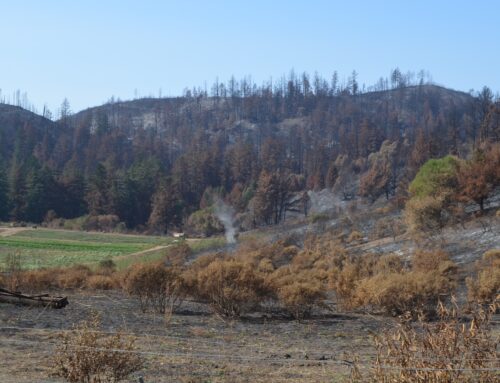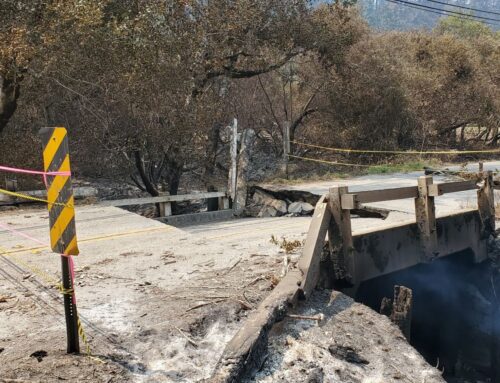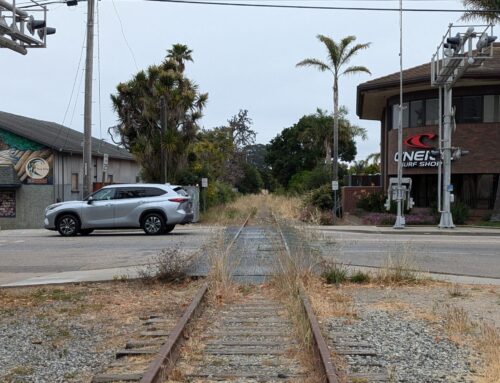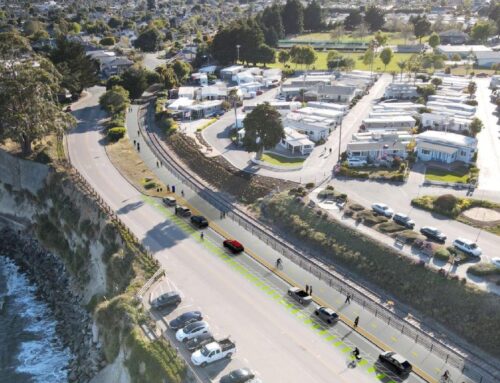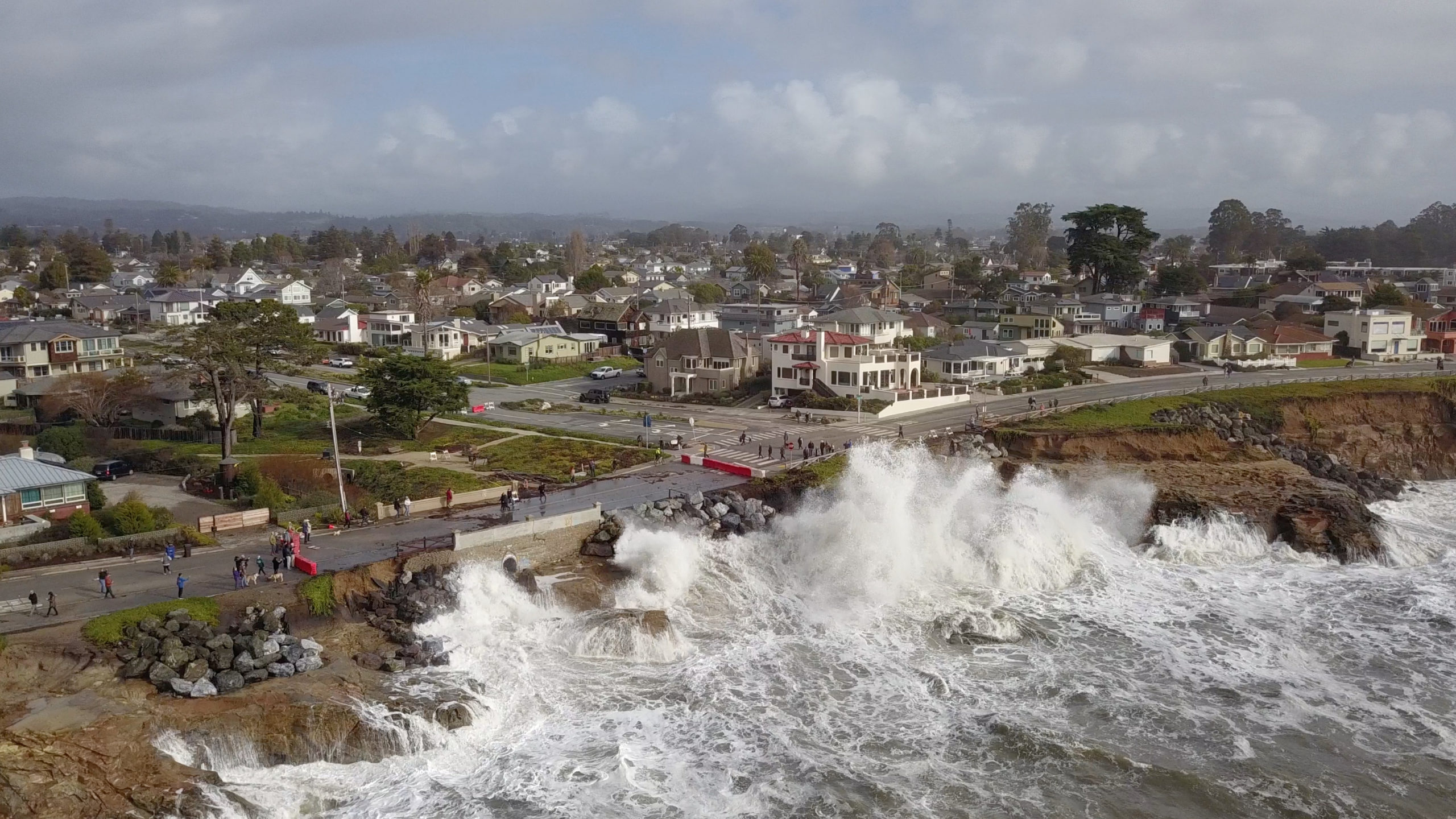
Waves slam West Cliff Drive near Woodrow Avenue in January. (TR Dreszer)
SANTA CRUZ >> Santa Cruz city leaders on Tuesday kicked off an outreach effort for a 50-year vision for West Cliff and coastal adaptation strategies.
The Santa Cruz City Council directed city staff in May to start work on the 50-year vision. During a city council study session Tuesday, city staff and consultants described how climate change is accelerating erosion on West Cliff and how the city might protect the coast and adapt to the changing environment.
City leaders and climate consultant firm Farallon Strategies have partnered to help craft the plan. “It’s not often that jurisdictions are thinking 50 years out,” said Michael McCormick, president of Farallon Strategies. “It creates some really unique opportunities.”
The 50-year vision will build on a West Cliff Management and Adaptation Plan published in 2021.
The plan hinges on a strategy called adaptation pathways, also known as adaptive management. Rather than relying on a single timeline of when and how the city will respond to coastal climate change, adaptive pathways include a range of options for when and how the city can respond.
The approach takes into account the uncertainty of how processes like sea-level rise and coastal erosion will unfold over the coming decades, McCormick said.
“It’s easy to make decisions when we have a lot of knowns in front of us, when we have good data,” he said during Tuesday’s meeting. “There will need to be decision-making frameworks that are grounded in the unknowns as well.”
No vote was taken at Tuesday’s city council study session. Mayor Fred Keeley and Councilmembers Sandy Brown and Scott Newsome were absent.
- A city survey about attitudes towards natural disasters and climate change is open until Sept. 15.
- Farallon Strategies recently published “A Resilient West Cliff, Accessible to All Roadmap” that describes some potential visions for West Cliff.
- As the plan develops, city staff plan to reach out to residents during council meetings and a community meeting at the end of September, said Tiffany Wise-West, sustainability and climate action manager for the City of Santa Cruz.
- City staff plan to present the plan for adoption by the city council in January. The plan is expected to align with new versions of the city’s Local Coastal Program and Local Hazard Mitigation Plan under development.
Short-term fixes are still in the works for January storm damage on West Cliff Drive. This fall, city leaders plan to complete four infill projects in cliffs adjacent to West Cliff Drive, Santa Cruz Public Works Director Nathan Nguyen said at Tuesday’s meeting. A new culvert on Bethany Curve is slated to start construction in spring 2024, he said.
Those short-term fixes should be just the beginning of the city’s response to the winter storms, said David Revell, a coastal scientist and consultant involved with past city adaptation efforts, in an interview.
“In so many disasters, there’s always this sense of ‘we will rebuild’,” Revell said. “But rebuilding in the same place doing the same thing is not going to get us to a better place down the road.”
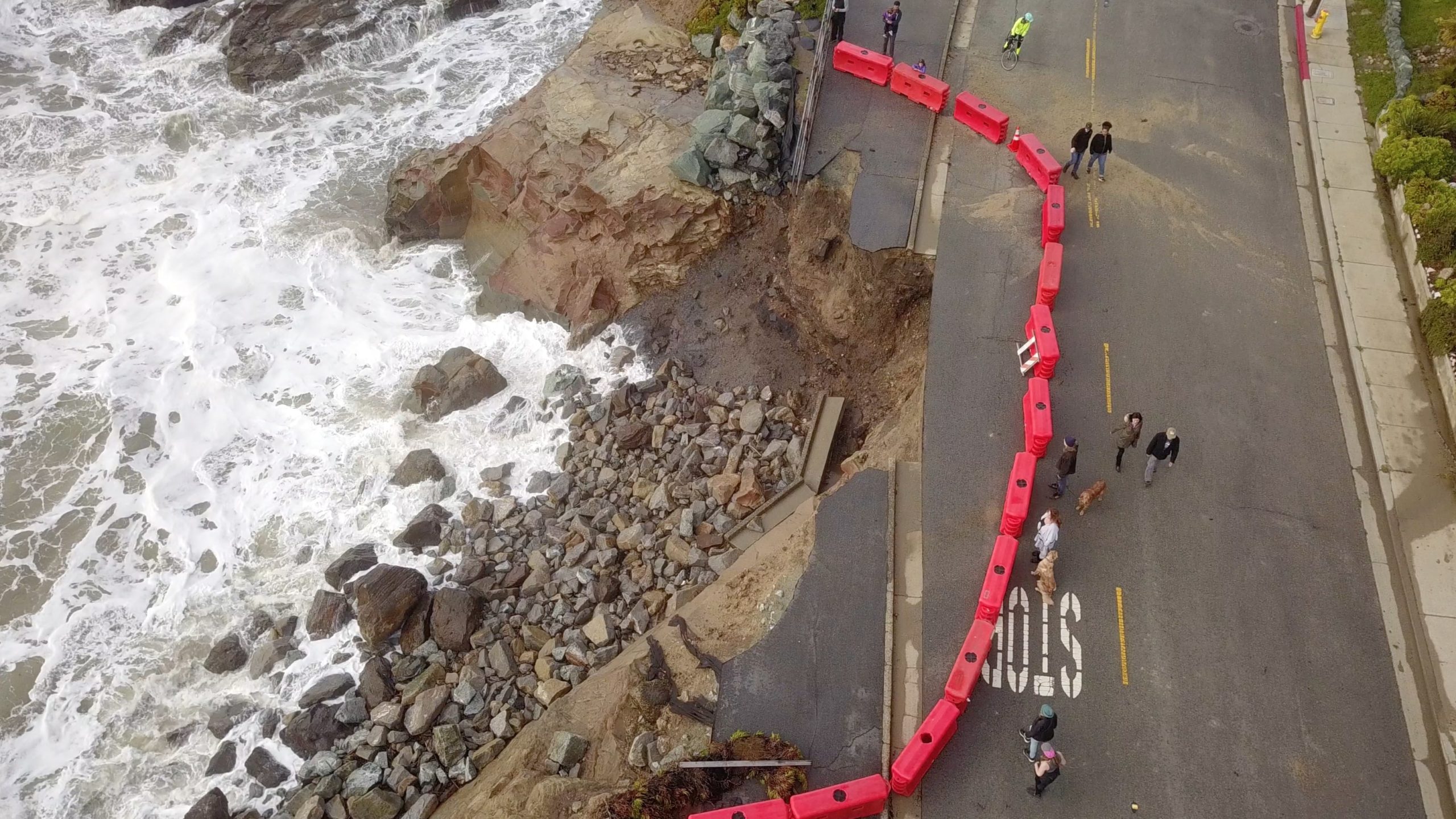
Parts of Santa Cruz’s West Cliff Drive bike path toppled during storms in January. (TR Dreszer)
Protecting the coast
For 40 years, the city has curbed cliff erosion by dumping large boulders along cliff bases or erecting seawalls along shorelines, Revell said. For decades, that approach, known as coastal armoring, has been the “de facto way of protecting the coastline” across much of California, said Wise-West.
The barriers are effective in deflecting waves from the cliffs. But over the past 15 years, the California Coastal Commission has started to discourage armoring, Revell said. That’s because seawalls and similar structures can have unintended consequences. The coastal commission regulates coastal infrastructure, ensures public coastal access and has other roles.
In some areas, the structures interfere with the natural flow of sediment and cause beaches to lose their sand. Although seawalls and boulders reflect wave energy from the sides of cliffs, “that energy doesn’t just go away,” said Revell. Instead, the energy is pushed down, where it scrapes away rock and sand beneath the structure and can cause erosion and sinkholes. Armoring can also alter or remove the waves that make surfing possible.
In place of armoring, the Coastal Commission encourages nature-based solutions where “nature is playing a role in restoration activities,” McCormick said during Tuesday’s meeting.
One nature-based solution that may play a major role in West Cliff’s future is structures that do the opposite of armoring — funneling sand toward beaches instead of away from them.
Sand is “a lost resource,” for protecting the coast, said Al Ramadan, a member of Save West Cliff. The community group is dedicated to preserving West Cliff Drive and the surrounding coastline.
Ramadan points to the Santa Cruz Small Craft Harbor, built in the early 1960s, which broadened Seabright State Beach. He envisions similar widenings for beaches like Its Beach or Pyramid Beach. “One of the thoughts is, if that works for Seabright, could that work for West Cliff?” he asked.
An offshore structure designed to trap sediment could broaden beaches along West Cliff, but beaches may not be enough to protect against high swells during storms, Revell said. Other nature-based solutions the city could consider to soften waves include building artificial reefs and depositing grapefruit- or watermelon-sized rocks along cliff bottoms, he said. Any potential solution needs extensive modeling and study before being pursued, he said.
The city is seeking money from the California Coastal Conservancy to conduct a study on possible nature-based solutions and sand management strategies. The city would also create virtual reality simulations of what the coast could look like under different scenarios. Coastal Conservancy staff will recommend the project for funding at a September meeting, Wise-West said. If approved, the project would begin in January.
Part of the challenge in creating the long-term vision is the vast degree of uncertainty in how climate change will progress, McCormick said. Although the city uses models that forecast sea-level rise and other climate impacts out to 2100, scientists can’t say for sure how quickly tides will rise or how storms might change in the future.
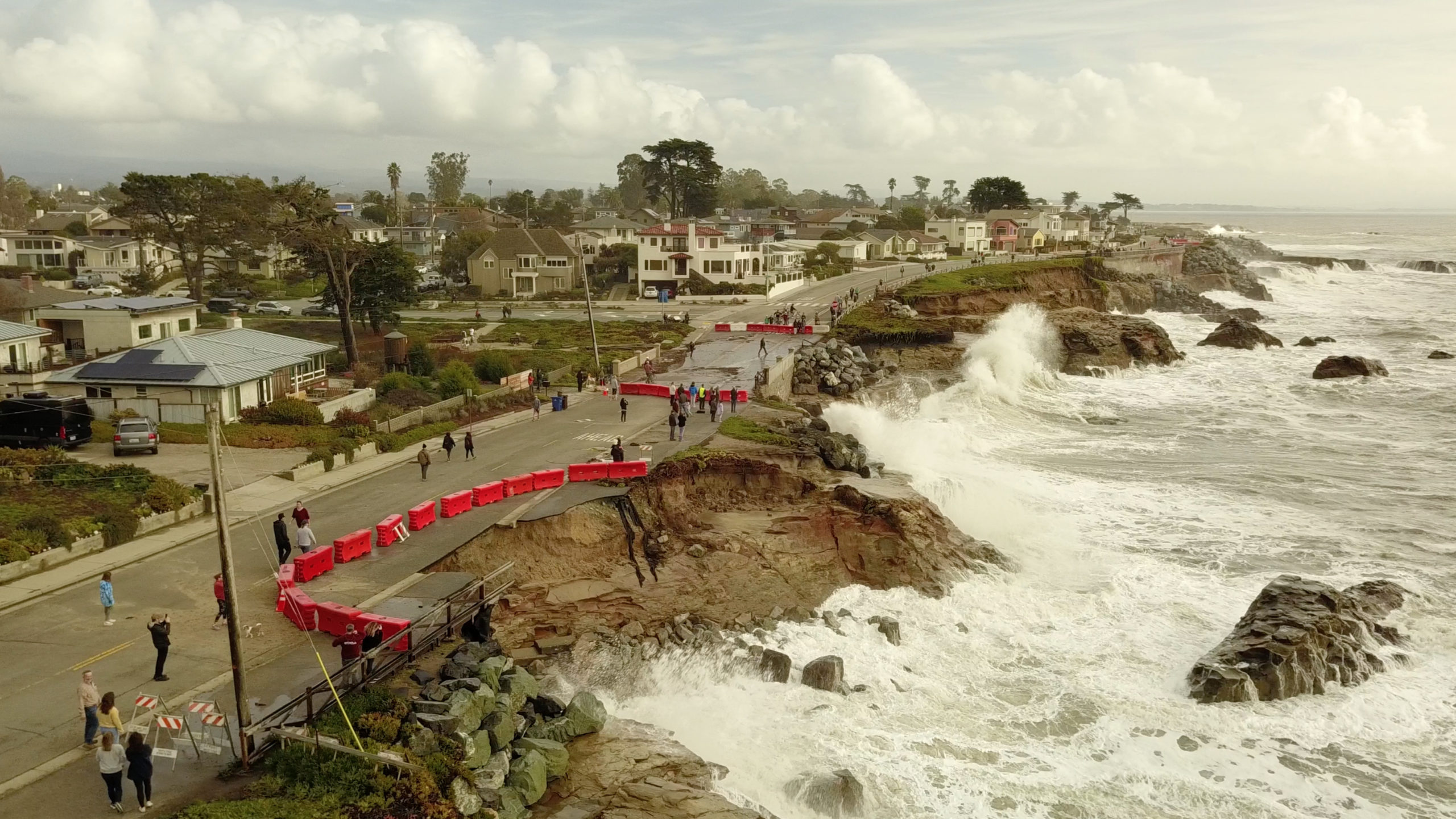
Barriers line West Cliff Drive near Woodrow Avenue in Santa Cruz after January storm damage. (TR Dreszer)
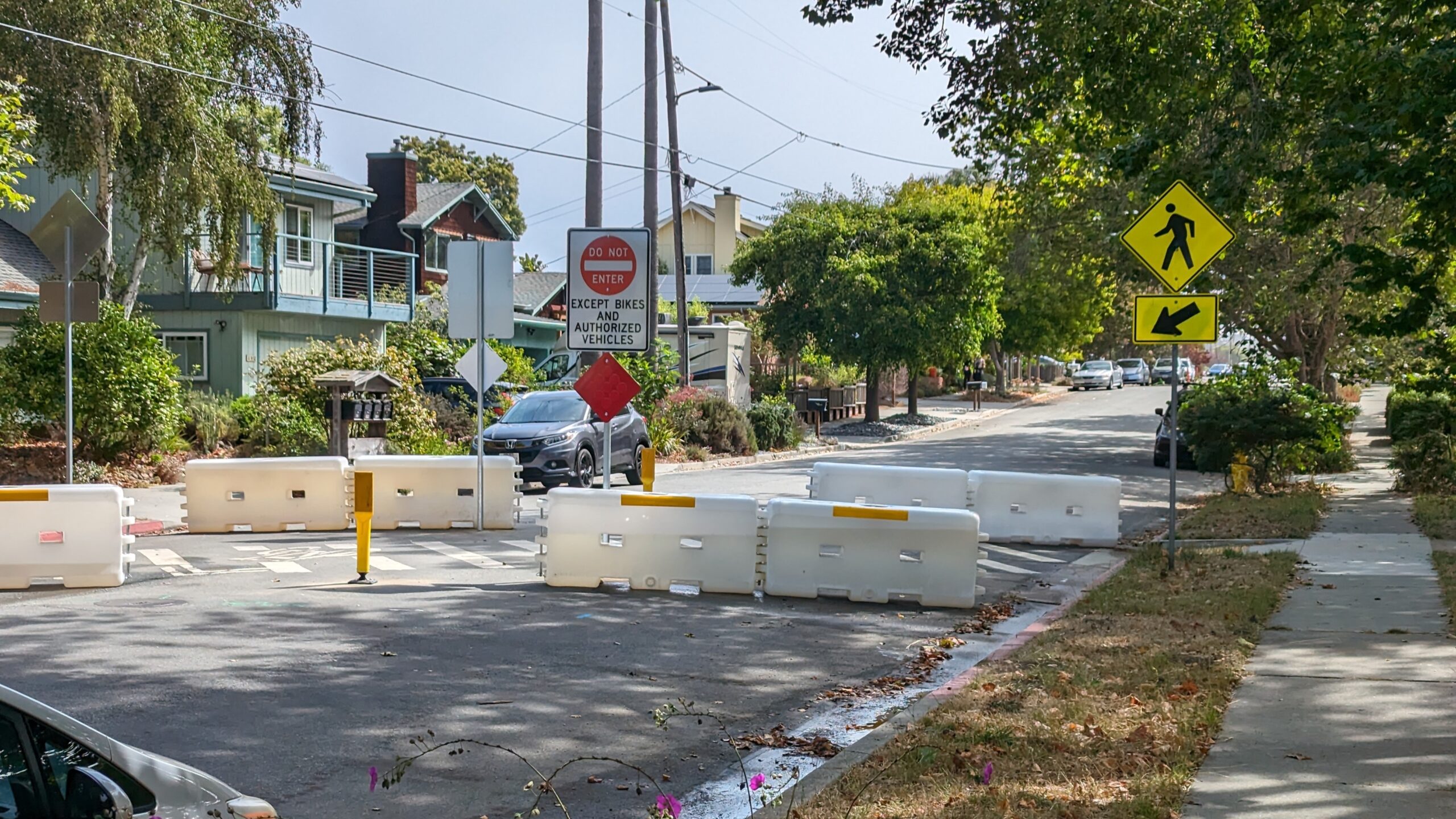
One block from detours on West Cliff Drive, barriers separate Alta Avenue at Bethany Curve to try to reduce traffic in the neighborhood. (Stephen Baxter — Santa Cruz Local)
Considering retreat
In eight interactive maps published in 2020, Santa Cruz city staff laid out possible futures for different stretches of the coast. In many areas, city leaders face decisions whether to preserve the current state of the coast or draw back.
But in the West Cliff Management and Adaptation Plan of 2021 , long-term forecasts suggested that the economic cost and the engineering constraints of preserving the coast in its current state eventually becomes too high. The city is forced to pull back from the cost in a process of “managed retreat.”
In the report’s economic analysis, the city weighed the cost of various strategies, including undergoing managed retreat as early as possible, or doing everything possible to preserve the coast and avoid retreat. Although an early retreat is a low-cost option, it’s unlikely to be popular, the report concluded.
Although extensive protection could forestall erosion, it could eliminate Santa Cruz’s iconic beaches and surfing waves and would be extremely costly.
The staff recommended what it termed a “recreation focused strategy,” a middle path that would limit armoring and preserve beaches and waves for as long as possible. But managed retreat “has got to be the long-term solution,” said Revell, who helped author the report.
Since the January storm damage, temporary barriers have made parts of West Cliff one-way and enlarged areas for cyclists and walkers. Permanently reducing West Cliff Drive to one lane, or replacing the road with a bicycle and walking trail, would be forms of managed retreat. A complete retreat from West Cliff has not been suggested.
Ramadan said he and other members of Save West Cliff are wary of plans for managed retreat. Removing vehicle access from West Cliff Drive would reduce people’s access to the coast, he said. Retreat may be necessary in the face of catastrophic storm damage, but he believes the city should focus on restoring the coastline, not retreating from it. “As a last resort, we have to face that possibility,” he said. “All we’re saying is, why would we choose that?”
Even if communities want to preserve West Cliff Drive as it exists now, the city needs to consider when and how the city might retreat, McCormick said. In the future, the coast could sustain so much damage that relocating coastal access or city roads would be the only option.
“If we are not thinking about how decisions on right-of-way relocation or managed retreat might be required to reduce risk from extreme events, then disasters caused by extreme events will make those decisions for us,” McCormick said.
How to get involved
Read more
- Amid West Cliff repairs, more diverse group wanted for coastal vision in Santa Cruz — Sept. 27, 2023
- Future of West Cliff Drive explored by residents, city staff — April 28, 2023
- Explainer: How does the California Coastal Commission work? — May 18, 2023
- One-way West Cliff Drive pilot advances in Santa Cruz — Feb. 28, 2023
- Coastal Commission staff outlines hopes for West Cliff plan — Feb. 10, 2023
- West Cliff Drive traffic meeting on tap — Jan. 27, 2023
- Plans emerge to revive Downtown Santa Cruz, reshape West Cliff Drive — April 27, 2021
- Santa Cruz aims for new approaches to West Cliff Drive erosion — Dec. 3, 2020
Questions or comments? Email [email protected]. Santa Cruz Local is supported by members, major donors, sponsors and grants for the general support of our newsroom. Our news judgments are made independently and not on the basis of donor support. Learn more about Santa Cruz Local and how we are funded.
Jesse Kathan is a staff reporter for Santa Cruz Local through the California Local News Fellowship. They hold a master's degree in science communications from UC Santa Cruz.


